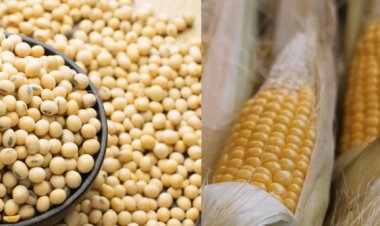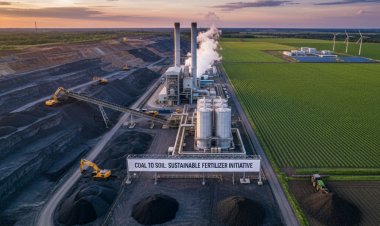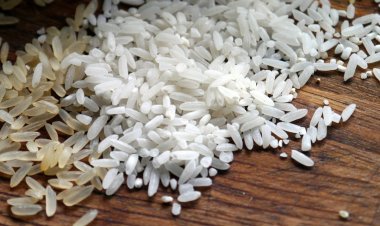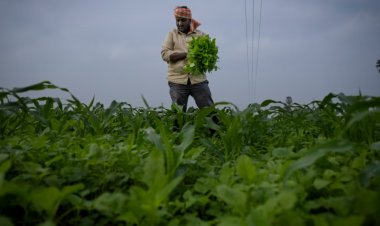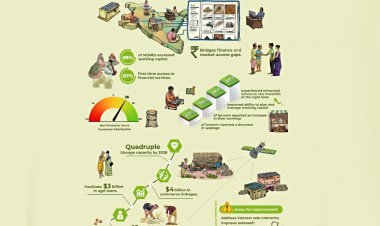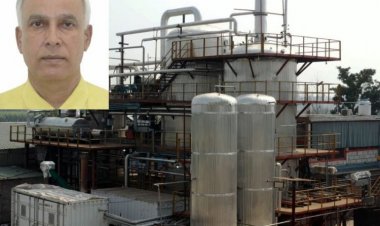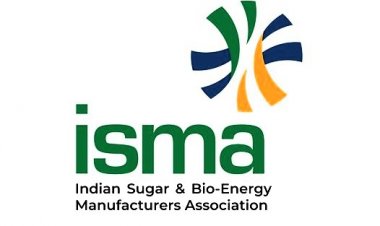Dairy & Food Inflation: Farmer vs Consumer
In north India, Mother Dairy and AMUL have increased the prices of liquid milk variants Rs 8 a kilo during the last ten months. Increase in prices of milk and milk products is universal across India. Not jut the dairy cooperatives, even the private sector dairies have also increased the prices.

Inflation is talk of the town. Reserve Bank of India has raised repo rate six times to keep a check on it. Homemaker is confused with a mixed bag; when she pays Rs. 7 for a kilo of potatoes, Rs. 20 for a kilo of tomatoes, Rs. 675 a kilo for ghee and is unsure of the price for the liquid milk and its allies. In north India, Mother Dairy and AMUL have increased the prices of liquid milk variants Rs 8 a kilo during the last ten months. Increase in prices of milk and milk products is universal across India. Not jut the dairy cooperatives, even the private sector dairies have also increased the prices. Major dairy brands in south India namely, Thirumala, Jersey, Vallabha and Heritage have recently increased their prices by Rs 2 to Rs 4 per litre. As per the new price, the cost of per litre of full cream milk of private brands will be Rs 72, standardised milk will be Rs 64, and toned milk will be Rs 52 per litre. But Aavin, cooperative in Tamil Nadu sells corresponding variants cheaper by Rs 12, Rs 21, and Rs 12 per litre respectively. Don’t expect any relief in prices until Diwali this year has been predicted by Sodhi former MD GCMMF in an interview given on CNBC TV 18. In the past known to pull the inflation down, milk is a culprit now. It is interesting to note most farm produce prices going southwards but milk northwards.
It is interesting to see the see saw of food inflation. It was to 4.19% in December, 2022, the lowest since January 2022. The dip was ascribed to sharp fall in prices of vegetables, edible oils, meat products and pulses. Contributors to increase in inflation were the cereals, eggs and milk. Their contribution has been Cereals 7%, milk 8.23% and eggs 6.91%. The prices of milk going up during January- February, 2023, has further worsened the situation.
World increase in food prices has hit record high in 2022 and gained more than 14% in 2022 compared to the previous year. The UN food agency said on Friday. According to The UN Food and Agriculture Organization’s (FAO) food price index was averaged 132.4 during December, 135.00 points for November. For 2022 as a whole, the benchmark index averaged 143.7 points, up 18 points or 14.3 per cent from 2021, and the highest since records started in 1990. The decline in the index in December was driven by a steep drop in the international price of vegetable oils, together with some declines in cereal and meat prices, but mitigated by slight increases in those of sugar and dairy, the FAO said. Food prices surged after Russia’s invasion of Ukraine in February last year on fears of disruptions to Black Sea trade. They have pared gains in part because of a UN-backed grain export channel from Ukraine. The FAO said last year that food import costs in 2022 would lead the poorest countries to cut back on shipped volumes. The FAO food price index comprises the average of its meat, dairy, cereals, vegetable oils and sugar price indices, weighted to the average export shares of each of the groups for 2014- 2016.
Trend of milk market versus procurement
Amongst the many reasons, one is skewed market versus the milk procurement. The reviews carried out by the Department of Animal Husbandry & Dairy during July, 2022 and November 2022, had highlighted the distortion. As compared to September 2021 during September 2022, milk procurement decreased by 3.27%, milk sales increased by 10%, Stock of SMP, white butter and ghee decreased by 55%, 76% and 87% respectively. While most dairy cooperatives informed a steep decline in procurement ranging to about 10%, reported growth in demand of milk and products. For example, the Karnataka Milk Federation recorded that their sale of ghee was nearly 2,000 tonnes a month during 2021-22 but has declined 1,700 tonnes a month. Similarly, butter production has fallen by 150 tonnes a month as compared to the previous year. KMF has to cut down supply of milk powder to government schools under the Ksheera Bhagya scheme.
To establish whether consistent and sharp increase in prices of milk and milk products a survey was carried out to understand the mechanics of the households coping with the high milk prices. The survey revealed that 59% or 6 in 10 households surveyed indicated that they are “paying higher prices and buying the same quantity of milk from their preferred brand. But at least 19% indicated that they have “reduced the quantity that they purchase. At least 16% have “switched to a cheaper alternative or grade of the same brand”; 3% have “switched to a lower cost brand or local supply source”; and 3% have stopped buying milk.
Lumpy Skin Disease hits Milk Productivity
Decline in milk procurement by most states has been assigned to occurrence of Lumpy skin disease (LSD), foot & mouth disease (FMD), floods and inferior fodder, high cost of feed, fodder and energy inputs. Production is expected to drop further during summer, as green fodder turns scarce. Milk shortage has slightly pushed up prices of milk and milk products.
Lumpy Skin Disease is the latest culprit. According to the information furnished in the Lok Sabha, 29.4 lakh cattle were infected all over India in 22 states and Union Territories. Of these 1.5 lakh died. Major states that suffered cattle deaths included about 75,000 in Rajasthan, 24,430 in Maharashtra, 17,932 in Punjab, 12,244 in Karnataka, 10,681 in Himachal Pradesh and a few in Gujarat. Gujarat was amongst the first states to prevent the spread of LSD by having vaccinated cattle with goat pox vaccine. Later as the vaccines against LSD were made available more than 6 crore cattle were vaccinated. This helped in building herd immunity and stopping further spread. But the LSD damaged the milk production substantially. The cows that suffered LSD showed almost 50% decrease in their milk production. Even after recovering from the disease cows did not restore milk production. Study has to be conducted whether the cows suffering LSD would be able to restore their production levels after their next pregnancy.
Soaring prices of feed and fodder
In simple terms, half the production cost of milk is determined by the sale price of cattle feed, dry and green fodder and the feed ingredients. According to the Chairman, National Dairy Development Board, over last one year fodder and feed costs have increased by 25%. According to the Tamil Nadu Dairy Federation, the fodder prices for cattle has increased by 50% since 2019. On January 19, 2023, the dairy farmers of the Udupi District Sahakar Bharathi staged a dharna in front of Udupi Deputy Commissioner’s office demanding that subsidy of Rs. 5 per kg be given on cattle feed. The Union Minister of State of Fisheries, Animal Husbandry and Dairying, Mr. Sanjeev Kumar Balyan has done an excellent analysis in reply to a parliament question. According to him dairy cooperatives guarantee that 75% of the consumer price of milk is passed on to the milk producers. There is a need to balance between farmers and consumers. Farmers need to get higher returns on milk for them to take up dairy farming, he said. In the recent times, there has been an increase in the prices of feed and fodder due to which prices of milk have gone up. If fodder rates come down, automatically milk prices will also decline, the minister added.
Cost for processing of milk and milk products have also gone up. This also a major reason cited by dairy sector companies. There has been a steep increase in costs of energy both for operation and logistics, packaging, and overheads including labour costs.
Exports
While during the last six months import and export of milk and milk products has been on a decline, most dairy companies have been upbeat on export. The war between Ukraine and Russia has greatly impacted the export of milk, cheese, butter, milk powder, eggs, beef as well as wheat and fruit products to Europe. India’s exports of dairy products had nearly doubled to Rs 4,700 crore this year compared to Rs 2,400 crore in 2021. This is a significant jump from Rs 1,200 crore compared to the exports during 2015. Data shows exports of skimmed milk powder drove the growth in outbound shipment. Many dairy companies have been exploring ways export dairy products and fresh liquid form. Export of fresh milk have been low because of the demand by importers for improved quality and hygiene. Amul have already started to look at ways to enhance its shipping. During recent months, the Hassan Milk Union in Karnataka despatched 1.5 lakh litres of tetrapak milk to the Maldives on a trial basis. The Union is expecting to export two lakh litres of milk and 20 tonnes of butter to West Asia. The delegation from Arab countries inspected the facility of the Hassan Union to satisfy themselves on the quality of the milk being packed. Milk exports are expected to fetch an annual revenue of Rs 500 crore to KMF.
As the current phase of demand-supply gap is overcome, India would foresee growing exports of dairy products. India has been upbeat based on the fact that world’s milk production currently is growing at 2% per annum versus India’s growth rate of about 6%. This is further supported by the declaration made by the Union Cooperative Minister Mr. Amit Shah that it has been decided to set up a primary dairy in every panchayat of the country, in the next three years, and for this Union Cooperative Ministry has prepared a three-year action plan. “We will set up 2 lakh primary dairies at village level across the country in three years, through this we will associate farmers across the country with the white revolution, and with this India will become a big exporter in the milk sector,” he added. Mr Shah informed that the Union Budget 2023-24, has allocated adequate fund for the registration of over two lakh multi-dimensional Primary Agricultural Credit Societies (PACS). He said that the PACS have been created to ensure that there remains no ‘panchayat’ which would lack a dairy or a fishery cooperative society. Income tax of 26% was previously levied on the cooperatives has been lowered to 15%.
Power Structure
Prices of agro-products are also determined by the power of the organization that controls or regulates. Consumer is happy buying cheaper vegetables while the farmer is at ransom. Currently ruling prices of vegetables are an example: for every kilo the consumer pays Rs. 7 for potatoes, Rs.10 for cauliflower, Rs. 20 for tomatoes and peas. Now look at the producer travelling some 20-30 km from his home, with aload full of tractor-trolley, cart or a truck with a vegetable, to a mandi for selling. His load is under auction and the buyers are limited. Whatever price is on offer he is forced to accept. His vegetable load is under-weighed, the amount calculated faces cuts for weighing, unloading and mandi tax. He returns home with a sullen face having secured just the production cost sans labour and profit. Now compare this with a farmer who produces a few litres of milk every day. He has a cooperative within his village at a walking distance. He stands in a queue with his friends and neighbours, exchanges pleasantries as he waits for his turn to sell his pailful of milk. He uncovers the pail, hands over a sample of milk to determine the quality and price, pours milk in a can on the computer-controlled weighing machine, he is able to see all operations on the computer screen including the amount calculated by the computer at a predetermined price that he has the knowledge about. The producers determines whether to take cash immediately or after a duration, he determines whether to take entire cash or buy feed inputs for his cow or buffalo and take home the balance.
Obviously, the power structure determines the fate of the farmer. For his vegetables the farmer is unsure what he gets, is under stress because someone else determines what he gets for his produce. He returns home confused, dissatisfied, disgruntled and even frustrated. There is none to share his displeasure and disappointment. The same farmer returns home with a pleasant smile when he receives the price for his milk or eggs or oranges. He knows he has some power to associate with -- the power of his milk cooperative, support of his egg coordination committee, or the backing of his growers’ association. The farmer knows that because of them, he would get the right proportion of what consumer pays for his produce. He perhaps is also aware that his cooperative/organization would not overcharge the consumer and ruin the future prospects.
Farmers’ Cooperatives for all agro-products can provide a lasting solution to farmer productivity, consumer satisfaction and national prosperity. Let us join hands together.
(The writer is an International Dairy Consultant. He can be contacted at Dr.rskrsk@gmail.com)



 Join the RuralVoice whatsapp group
Join the RuralVoice whatsapp group

















